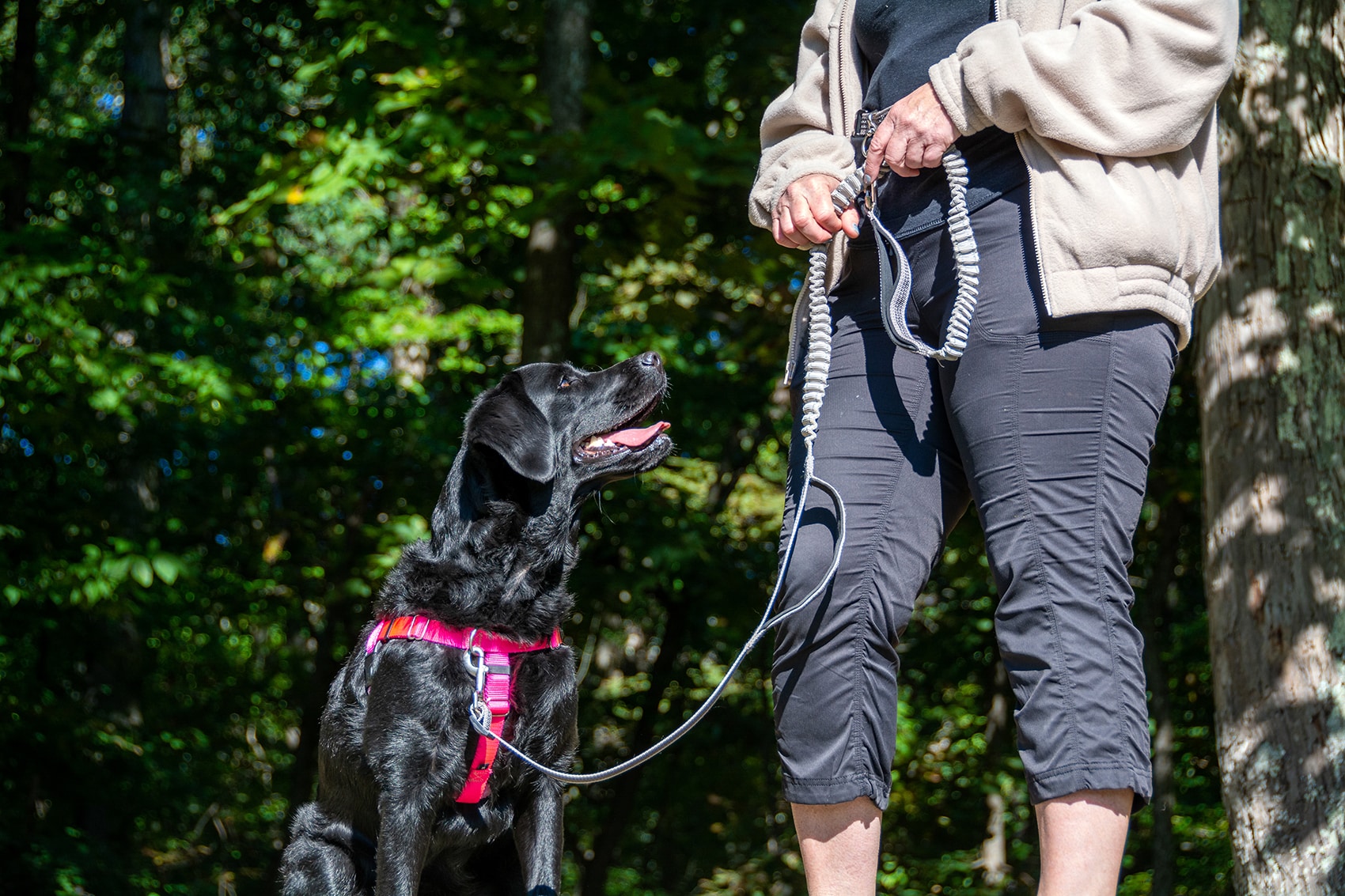I’ve never really had to wonder what I would do if I turned a corner and found myself face-to-face with a bear while out walking my dog. I’m from the south… or midwest, depending on who you ask. We don’t have to worry about the trash being raided by anything bigger than a 30 pound raccoon or give a second thought to bringing canine companions on hikes.
But when I booked a mountain campsite and decided to bring my buddy along, I knew I had some thinking to do. How would her presence change how I hiked? Would it be safer, or more dangerous? What was the protocol in case of a bear encounter with this new factor?
So I did what every responsible dog-owner and wildlife lover would do. I went down the research rabbit-hole. What I found was a lot of common-sense tips and some regulatory things pet-owners should be aware of.
But I needed to go deeper than that. So first, let’s go over something none of us want to think about. The risks of exploring bear country with our dogs.
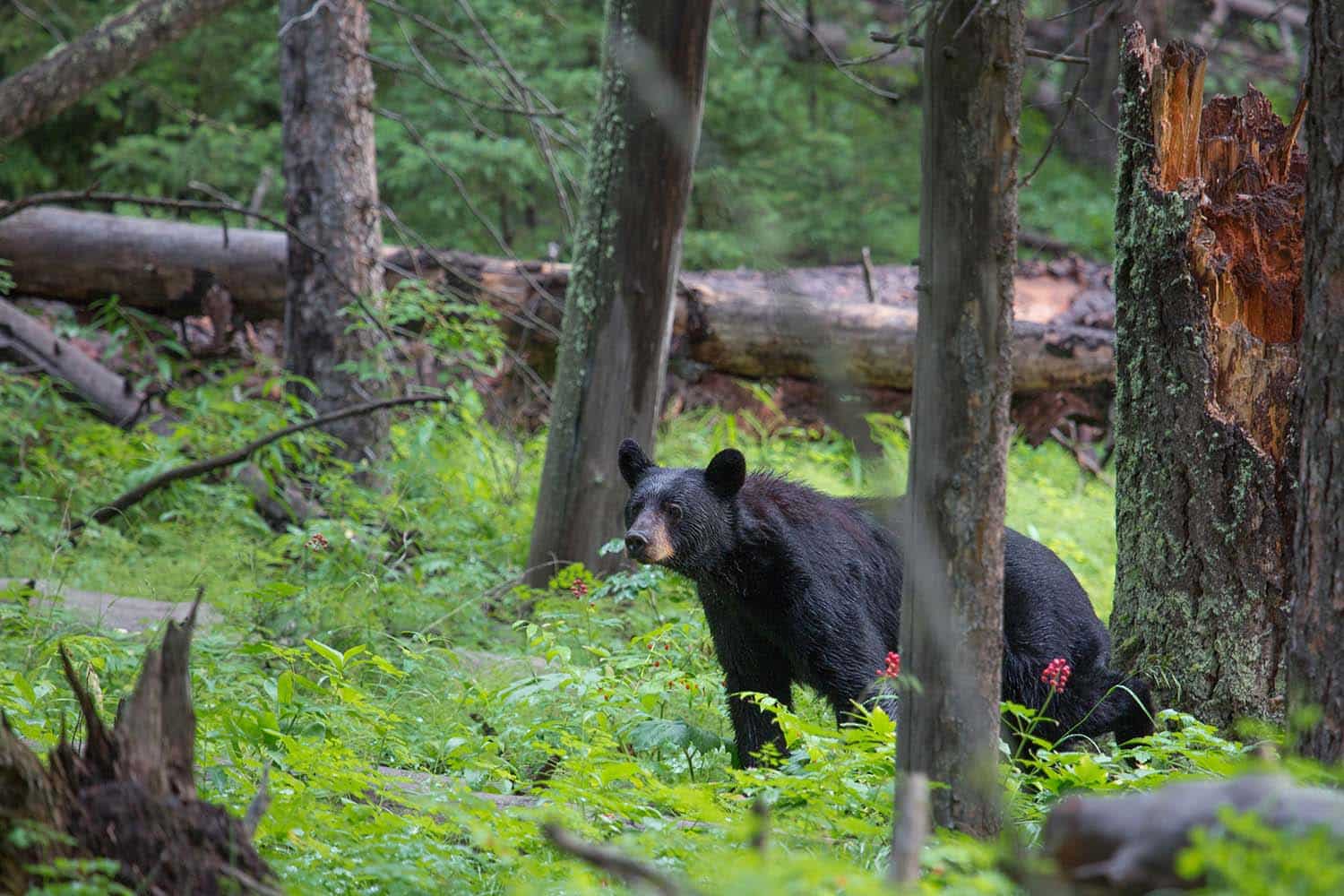
Understanding the Risks of Exploring Bear Country With Your Dog
Dogs and bears aren’t exactly best friends. From squabbles over carrion in the wild to territorial disputes in backyards, they’ve never been known to get along. It’s no surprise, then, that bringing a canine into a bear’s home comes with a certain amount of inherent risk for encounters between bears and dogs.
BUT it’s important to note that the main risk is easily mitigated. Keep your dog leashed, period.
A loose dog is a huge risk in bear country. It’s great fun, of course, for them to race through the timber and sniff every pile of scat they find. But if they come upon a bear, there are really only 3 possible outcomes.
- The bear could take to a tree, giving you a chance to grab your dog and get the heck out of dodge.
- Your dog could corner the bear, forcing it to defend itself.
- Your dog could run back to you, bringing the bear with it.
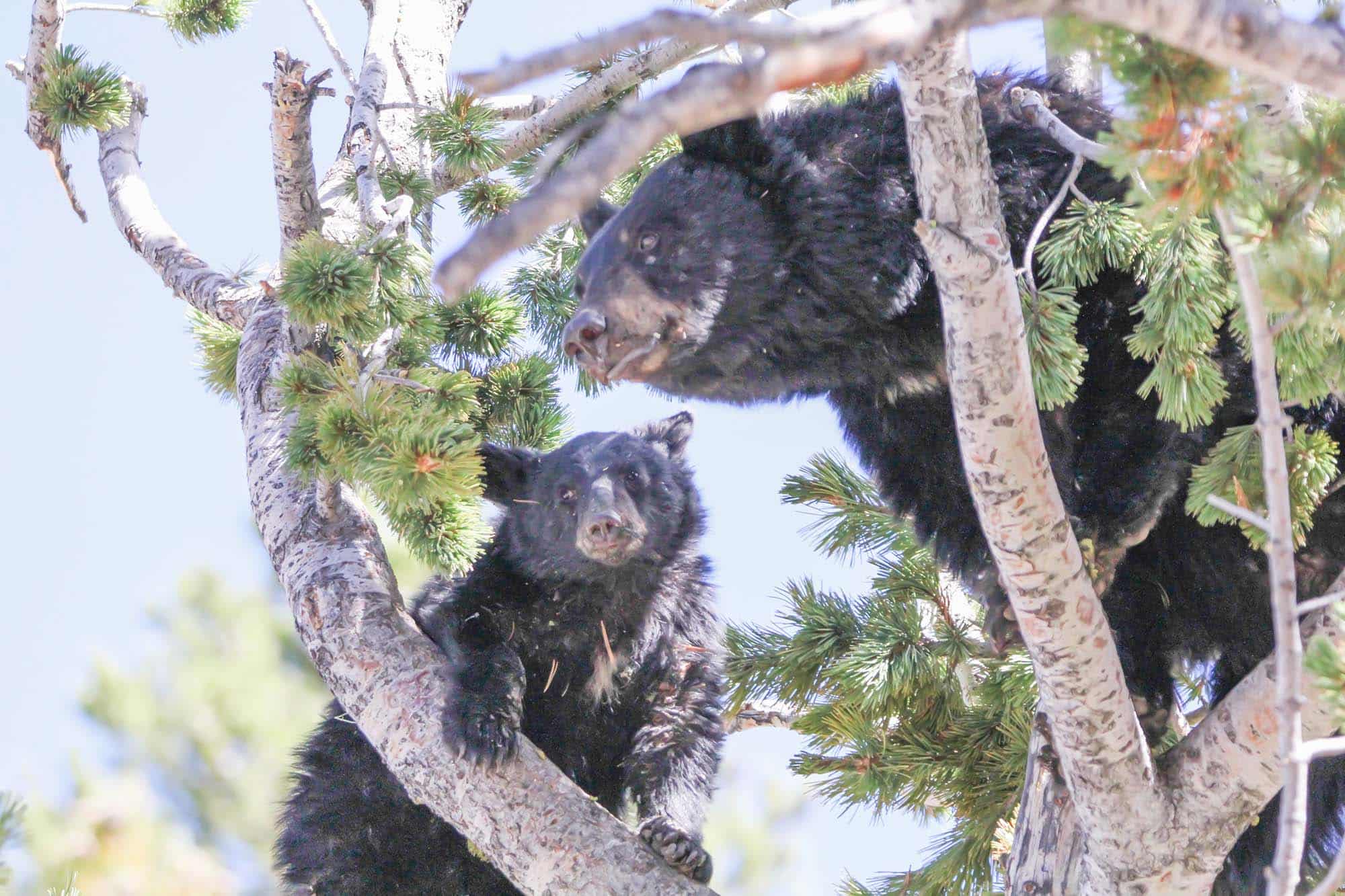
A study by the University of Wisconsin, completed in 2019 and utilizing all agency-confirmed, non-fatal conflicts with black bears in the 48 continental United States from 2000-2017, revealed some enlightening statistics.
- 40% of defensive conflicts from female black bears involved a victim who had a dog.
- 25% of ALL black bear conflicts involved a dog.
- Of those conflicts, a whopping 79% involved a dog that was off-leash.
- 40% of cases involving a dog resulted in severe injuries.
Overall, the study concluded there was evidence that “dogs can trigger defensive attacks by black bears.” That’s important to note, since defensive conflicts are the most common type anyway. Bears don’t generally want to engage with people. Being surprised or feeling threatened is usually what it takes to incite violence, and dogs don’t typically mind offering either of those things.
All of that being said, it’s understandable if you want to include your dog in your bear country adventure. So let’s move on to what you can do to mitigate these risks.
Prepare For Your Canine-Accompanied Bear Country Adventure
If you decide to include Rover in your adventure, there are steps you can take before ever leaving home to keep yourself as safe as possible.
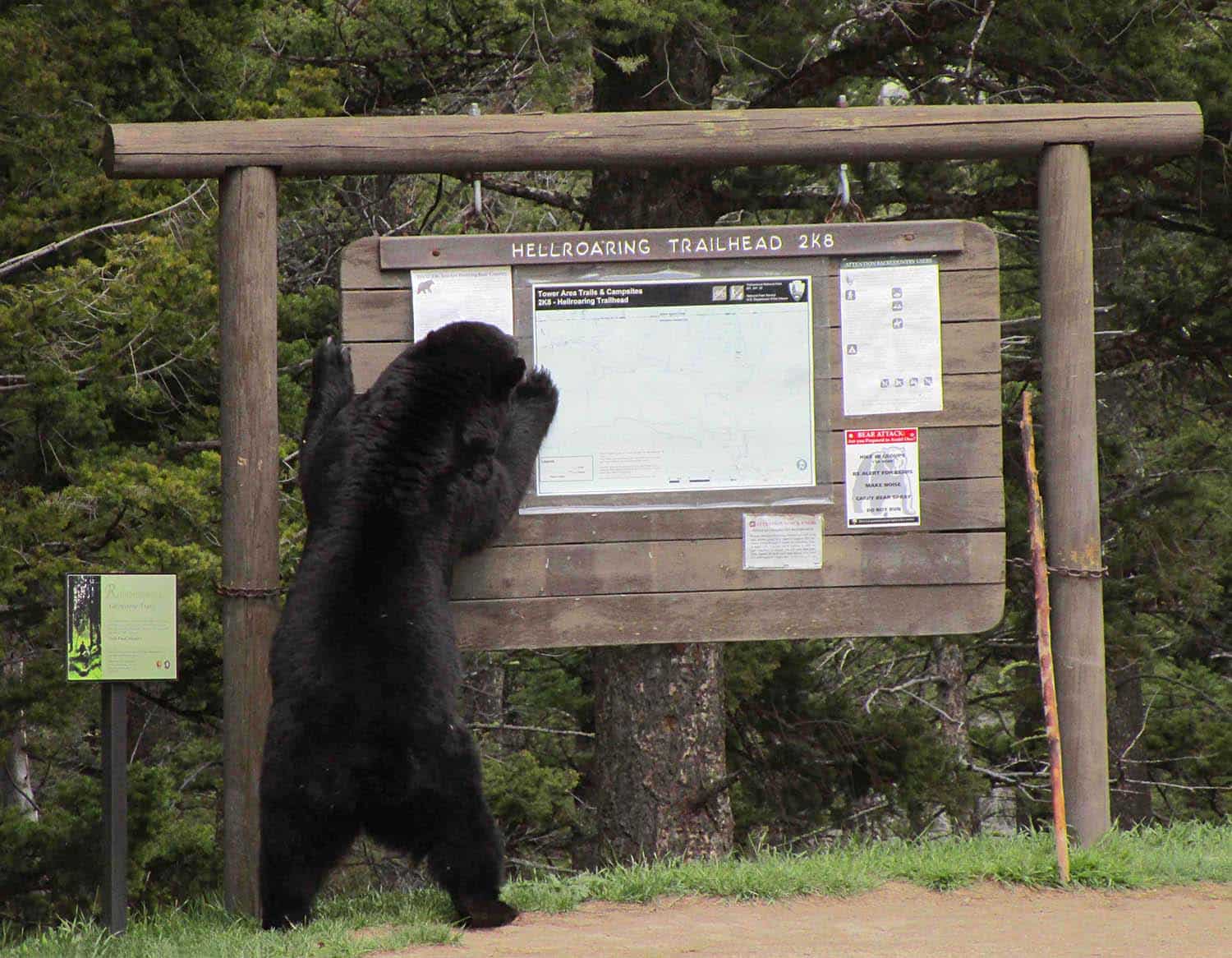
1. Research rules and regulations
There are places where dogs simply aren’t allowed. Taking the time to personally research your destination will ensure you don’t find yourself with a fine or ushered away from a long-anticipated adventure.
For instance, in Yellowstone National Park, pets ARE allowed in developed areas like campgrounds, attractions, and parking lots. But they are NOT allowed on hiking trails or in the backcountry. If you pull over for a hike, you’re going to have to leave your pooch behind.
Know before you go.
2. Buy the proper gear
Taking your dog with you on a hike or camping trip anywhere means more gear. Here’s a short list of some things to consider.
- Collar/Harness – Whatever your pooch prefers for a walk in the park, make sure it’s not something he can’t slip out of in a frenzy.
- Leash – Parks often stipulate how long these can be. It should be sturdy, with a solid clip and easy-to-hold loop. Do not use a retractable leash.
- Crate – If you’re camping and need to be hands-free, crate your dog.
- Bear Canister – Dog food needs to be protected just as much as your campfire chili. Either put your dog’s kibble in a plastic bag and store it in your own BearVault or have a separate one for all your dog’s goodies. The BV425 is a perfect size for all the dog food!
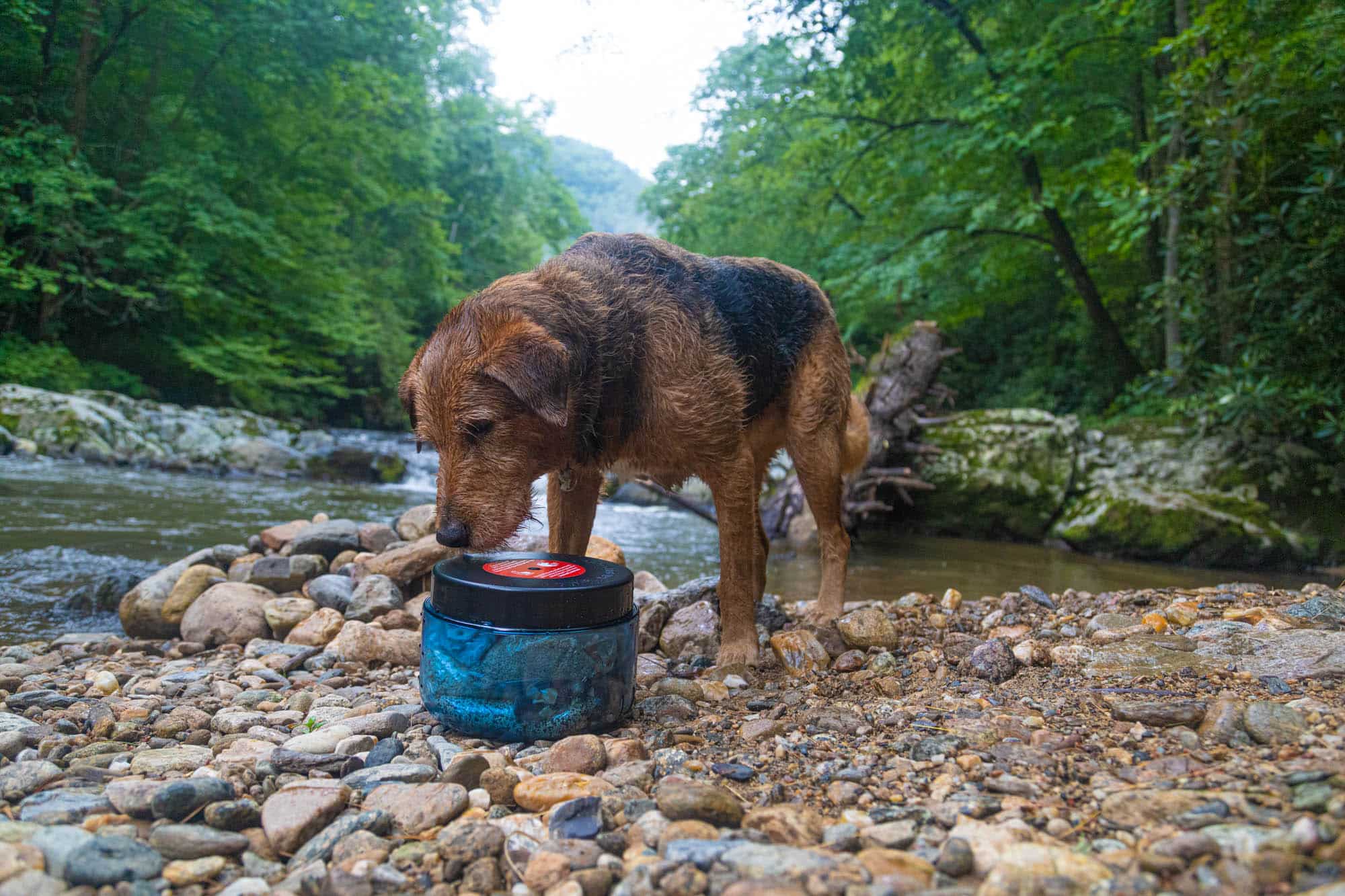
3. Bring bear spray
This could go under ‘Gear to buy’ but it really needs to be emphasized. Your dog’s presence could increase your likelihood of a bear encounter. You absolutely must be prepared for the worst case scenario and have the confidence to stand your ground.
Knowing all about bear spray, what it is, and how to use it, could be the difference between a scratch-free encounter and serious harm.
When You Encounter A Bear With Your Dog
If you read our post about what to do when you meet a bear, you already know the rules of engagement.
- Stay calm
- Talk in a low voice
- Stand your ground calmly
- Deploy bear spray
That takes a certain amount of willpower even in the best of circumstances. Facing off with a large predator isn’t exactly on many people’s bucket lists! And adding a dog to the mix is, obviously, going to make it even more difficult.
Here are some added tips for a bear encounter when you have your dog.
- Keep the leash short.
- If your dog is small enough and you believe you can do so quickly and safely, pick it up with one arm. Keep your dominant hand free for bear spray.
- If your dog is larger, take up all the slack in your leash. This will keep it close by your side and minimize its lunges.
- Talk calmly to both your dog AND the bear as you stand your ground.

The goal is to let the bear know that a) you’re not prey and b) you’re not interested in challenging him. Your dog may not agree, so keeping him in check is going to be your primary objective.
Cool, calm, confidence… that’s what you’re going for here.
If the bear appears ready to charge, ready your bear spray for an encounter. Continue to keep your dog close while deploying it.
Tips for hiking with your dog in bear country
- NEVER unclip that leash. I know it’s tempting. I know he has, like, the best recall. But in bear country the risk far outweighs the reward for both him and you.
- Choose trails with less undergrowth. Being able to see farther means you have a better chance of spotting a bear early and avoiding an issue.
- Watch for bear signs. Bear scat on the path (how fresh?), hair caught on rough bark, claw marks in tree bark, prints… All of these could mean you’re not alone. Avoid trails with lots of signs or fresh prints.
- Keep bear spray handy. It should be worn in a holster or clipped to the shoulder strap of your pack. And wherever it is, you should practice accessing it so muscle memory is in your corner in case of an encounter.

Tips for camping with your dog in bear country
- ALWAYS keep your dog contained. Just like on the trail, your dog needs to be kept close and under your control at all times. Campgrounds often have rules about this as well, but the bottom line is that keeping Fido close or caged is safest for you both.
- Choose campsites with good visibility. It really sucks to only be able to HEAR something moving around your camp. Choosing a site that’s not surrounded by thick brush could give you several extra seconds to spot a bear before it gets close.
- Practice proper food storage, including for dog chow. Food conditioned bears are the worst offenders at campgrounds and campers need to do their part to ensure future generations of bears don’t discover that campers = easy calories. Proper food storage protects not only you and Fido, but also bears and the explorers that come after you.
We get it… Stargazing just gets better when you’re running your fingers through a shaggy coat! Striking out into the beauty of bear country with your faithful sidekick can be a wonderful way to spend a weekend. Taking the time to understand the risks and taking the steps to manage those risks can minimize the risks and KEEP it wonderful.

Guest Author:
Jessica Cockroft
Jess merges her passion for words and an insatiable longing for adventure as an outdoor freelance content writer and marketer. When she’s not busy stringing words together you’ll probably find her planning another camping trip for her crew of kids or taking care of the homestead. You can find her on LinkedIn and Instagram, as well as on her own website.

